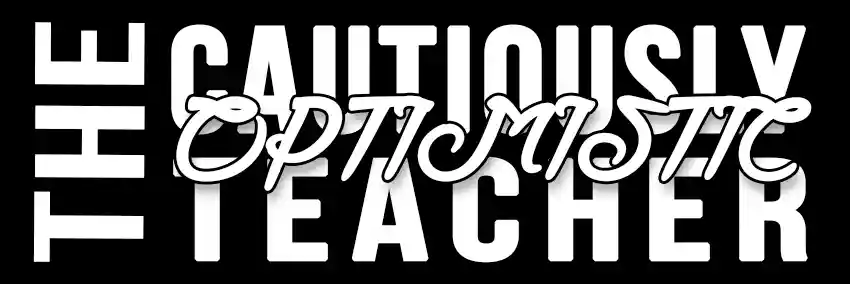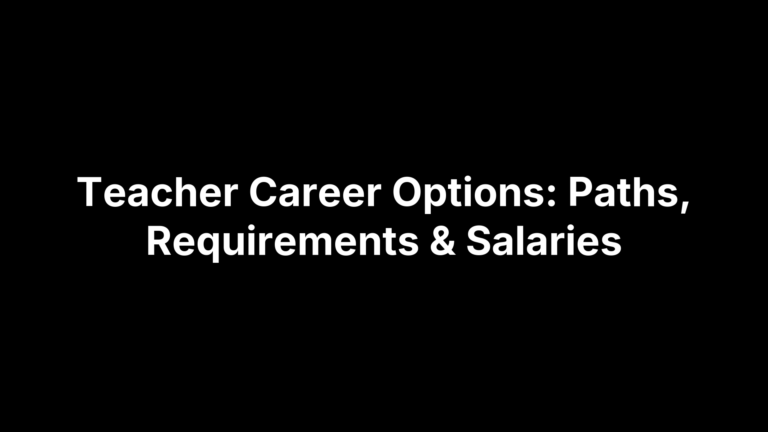A Practical Framework for Classroom Rules, Routines, and Consequences
If you’re spending more time redirecting than teaching—or if expectations change depending on your mood, the class period, or who’s in the room—you’re not alone. Without clear classroom rules and predictable, logical consequences, even great lessons can unravel. Students feel uncertain, you feel inconsistent, and the day ends with both sides frustrated.
The good news: a simple, values-driven system can steady everything. With 3–5 positive rules, routines that make those rules visible, and a logical, restorative consequence ladder, you can respond to behavior calmly and consistently. Add in frequent acknowledgment of what’s going well, explicit modeling and practice, and communication with families, and you’ll create a learning climate that protects instructional time and student dignity. To save you prep time, this guide includes free printable templates you can put to work immediately.
In this step-by-step guide, you’ll clarify your vision, choose clear rules, get student buy-in, translate expectations into routines, and build a consequence ladder that fits your context. You’ll also get a day-one lesson plan, “looks like/sounds like” practice tools, posters, a parent letter, and tips for applying your plan consistently across grade levels and settings (including online). We’ll finish with common pitfalls, quick wins, and data tips to keep your plan on track.
Step 1. Clarify your classroom vision and values
Before you set classroom rules and consequences, define the culture you want to protect. Write a brief vision that centers respect and academic achievement, then pick 3–4 core values (for example: respect, responsibility, safety, effort) that align with your school. Translate those values into concrete moments: what they look/sound like during entry, discussion, group work, transitions, and tech use. This clarity becomes the north star for every routine and consequence that follows.
Step 2. Choose 3–5 clear, positive rules
Turn your values into 3–5 positively stated, observable rules. Keep them broad enough to cover most behaviors, and write what to do (not what to avoid). Fewer rules are easier to remember and teach, and they align with guidance to emphasize routines. Use widely adopted anchors and test each rule by asking, “Can I see or hear this?”
- Show respect
- Be prepared
- Be prompt
- Participate
- Be responsible
These become your headings for routines and your classroom rules and consequences plan.
Step 3. Get student buy-in and co-create examples
Students respect rules they help shape. After you share your values and 3–5 rules, invite the class to co-create concrete, observable examples. Facilitate a brisk brainstorm, press for clarity (“Can we see/hear it?”), and capture language on an anchor chart. Have students justify how each example protects learning. You keep final say to ensure alignment with school norms.
- Looks like/sounds like: T-chart for each rule using student phrasing.
- Scenarios + role-play: Quick-writes; act out incorrect/correct, then redo respectfully.
- Talk it out: Turn-and-talk for examples/non-examples; cold call to check understanding.
Step 4. Translate rules into routines and procedures
Rules stick when they become predictable micro-steps students can execute. As many coaches note, rules have consequences; routines get reminders. Script each key moment so students know exactly what to do, then teach, model, and post the steps. Use a simple frame: “When we X, we Y, because Z,” and keep steps observable.
- Entry (Be prepared): In, materials out, homework visible, start warm-up in 2 minutes.
- Transitions (Be prompt): Chime → freeze-eyes-hands-voice → move on timer.
- Discussion (Show respect/Participate): Hand signal to speak; listen, no side talk; sentence stems.
- Materials (Be responsible): One manager per team; borrow/return bin; “you break it, you fix it.”
- Tech use (Be responsible): Devices lids at 45, approved sites only, phones to designated spot.
- Help routine (Participate): Quiet hand/desk card; continue on next item while waiting.
Step 5. Build a logical, restorative consequence ladder
Build a consequence ladder that is logical, restorative, and least-to-most intrusive. Tie the response to the behavior, focus on fixing the harm, and keep student dignity intact. Consistent steps—like warnings, conferences, seat moves, and reflection with a parent call—anchor your classroom rules and consequences plan and help you respond calmly and predictably.
- Class reset or neutral whole-group reminder.
- Private prompt or nonverbal cue to redirect.
- Written warning plus quick teacher conference.
- Logical redirect or seat move to support focus.
- Fix-it action: redo, clean up, apology, brief practice.
- Reflection sheet and parent contact; office referral only for safety or repeated escalation; document.
Step 6. Define rewards and acknowledgments for positive behavior
Plan for positive behavior as intentionally as consequences. Use a light, sustainable system that rewards behaviors defined in your classroom rules and consequences plan. Keep it specific, frequent, and fair; praise publicly, correct privately. Favor small, immediate acknowledgments and blend individual and class goals.
- Behavior-specific praise: Name the rule and action.
- Quick recognition systems: Points, tickets, or stickers.
- Small privileges: Preferred seat, class job, music minute.
Step 7. Plan your day-one lesson: communicate the what, why, and how
Kick off with a tight mini-lesson so students see purpose, not just power. Name that you’ll spend the next 20 minutes aligning on expectations and consequences, and explain that a culture of respect and academic achievement is how everyone reaches their goals. Then make the plan visible, model it, and check for understanding before anyone is held accountable.
- What (2 min): Post your 3–5 rules and the consequence ladder; define each in observable terms.
- Why (3 min): Connect to learning time, safety, and meeting goals; fairness comes from consistency.
- How (10 min): Teach cues, model routines, do quick role-plays (including logical “redo/fix-it”).
- Check (3 min): Cold-call, quick-write, or exit ticket: “What does ‘Be prepared’ look like at entry?”
- Close (2 min): Student commitment + where to find posters; praise publicly, correct privately.
Step 8. Teach, model, and practice with “looks like/sounds like”
Make expectations tangible by teaching them through a “looks like/sounds like” routine. For each rule, co-create a quick T‑chart, model the right and not‑yet versions, and let students rehearse with immediate feedback. Keep practice brisk, neutral, and repeatable; include redo/fix‑it so consequences feel instructional and aligned with your classroom rules and consequences plan.
- Build the chart: 3–5 observable actions and phrases; post for reference.
- I do → We do → You do: Model, group practice, quick checks.
- Role-play + redo: Act, pause, fix; give behavior-specific praise.
Step 9. Display and document your plan (posters, syllabus, parent letter)
Make the plan visible, consistent, and family-friendly. Post your 3–5 rules and consequence ladder where everyone can see, mirror the same language in your syllabus, and send a simple parent/guardian letter. Document redirects and calls to apply consequences consistently and equitably, and translate materials for accessibility.
- Posters: Rules + ladder, plus “looks like/sounds like” T‑charts for key routines.
- Syllabus blurb: Same wording, routine cues, acknowledgments, and your contact info.
- Parent letter: Clear what/why/how, logical “fix-it” examples, and a signature line.
Step 10. Free printable templates to use today
Grab plug‑and‑play printables aligned to your 3–5-rule framework and restorative consequence ladder. Print, post, and start using them today—no redesign required. Each template reinforces positive norms, makes routines visible, and saves you time when you need to redirect, reteach, or celebrate wins.
- Rules Poster: 3–5 positive, observable rules.
- Consequence Ladder: Least-to-most, logical steps.
- Looks Like/Sounds Like Charts: Student-created examples.
- Routine Cue Cards: Entry, transitions, tech, discussion.
- Reflection/Action Plan Sheet: Fix, plan, commit.
- Parent/Guardian Letter: What/why/how + signature.
- Behavior/Acknowledgment Tracker: Points, notes, calls.
Step 11. Apply consequences consistently and equitably
The power of your classroom rules and consequences comes from calm, predictable follow-through. Use the same step for the same behavior every time, scale responses from least to most intrusive, and prioritize logical repair over punishment. Keep redirects private and praise public, escalate only for safety or repeated disruption, and document each step to ensure equity. Consistency protects instructional time, builds trust, and keeps expectations fair and transparent.
- Reference the ladder: Point to the posted step you’re using.
- Use neutral, specific language: Name the rule and observable behavior.
- Offer a redo/fix‑it first: Repair the impact before moving up the ladder.
- Track briefly: Tally warnings/conferences to stay consistent across classes.
- Audit for bias: Review notes by student/time to check fairness; reteach routines if patterns emerge.
Step 12. Partner with families and colleagues for alignment
Consistency grows when families and colleagues share the same language and responses. Invite parents early, explain how your classroom rules and consequences protect learning, and coordinate with your team so routines feel familiar across classes—reducing confusion and escalation.
- Positive first contact: send a parent letter aligned to your rules.
- Two-way updates: quick notes or calls for wins and concerns.
- Team alignment: share the same rules, key routines, and steps.
Step 13. Adapt for grade levels and settings (elementary, secondary, online)
Your core stays the same—3–5 rules, explicit routines, and a logical, restorative ladder—but the visuals, language, and tools should match your learners and context. Teach, model, and practice with examples tied to what students actually use each day: markers and carpet spots, lockers and phones, or mics, cameras, and chat.
- Elementary: Use visuals and hand signals; turn practice into quick games. Favor “you break it, you fix it,” redo, and apology. Short ladder: reminder → warning → seat move → fix‑it + family call.
- Secondary: Keep rules concise and emphasize independence. Define tech norms; use a phone caddy/“phone jail” when phones are misused. Leverage reflection sheets and parent contact for repeats.
- Online: Set clear norms for mute/camera/chat. Post routines on slides. Use non‑punitive tech limits (mute, chat pause), quick redos, brief conferences, and digital reflection forms.
Step 14. Handle common problem behaviors with logical responses
When behavior slips, respond with least-to-most intrusive steps that repair harm and reteach routines. Tie each response to a posted rule, keep tone neutral, and favor “redo/fix‑it” over punishment. Use your classroom rules and consequences ladder to stay predictable, move up only if needed, and document briefly.
- Off‑task talking: Nonverbal cue → private reminder → seat move → redo “listening.”
- Blurting: Immediate redo using hand signal; brief “practice academy” of the cue.
- Missing work/materials: Borrow bin + tracker; make‑up work time before fun activities.
- Phone/tech misuse: Phone caddy/“phone jail”; temporary loss of access; reflection.
- Minor disrespect: Try it again respectfully; apology letter; quick restorative check‑in.
- Mess/throwing: “You break it, you fix it”—clean up, then practice the routine.
- Noisy/tardy entry: Step out, re‑enter correctly; model and time the prompt routine.
- Repeated issues: Reflection/action plan + parent call; office referral for safety only.
Step 15. Track data and adjust with RTI and reflection
Use quick, objective data to sharpen your classroom rules and consequences over time. Keep brief tallies of warnings, conferences, and fix‑its by student, behavior, time, and setting. Look for patterns and equity issues, then respond through RTI: strengthen Tier 1 for everyone (reteach routines), add Tier 2 for some (check‑ins, small goals), and collaborate on Tier 3 supports when needed.
- Collect simply: One-page grid or clipboard tally per class.
- Review weekly (5 min): Spot spikes by time/task; check for bias.
- Adjust Tier 1: Reteach, model, and practice targeted routines.
- Add Tier 2: Scheduled check-ins, behavior goals, reflection sheets.
- Escalate Tier 3 with team: Counselor/admin plans; document steps.
- Monitor impact: Track for two weeks; keep what works, revise what doesn’t.
Step 16. Avoid common pitfalls and try these quick wins
Even strong plans wobble if you slip into common traps. Keep responses logical and restorative—rules get consequences, routines get reminders. Keep it simple, visible, and consistent. Try these fast fixes to sharpen your classroom rules and consequences.
- Overstuffed lists: trim to 3–5 rules.
- Vague wording: make behaviors observable.
- Public call-outs: praise publicly, correct privately.
- Skipped modeling: do quick I/We/You practice.
- Inconsistent follow-through: point to ladder and log.
- Missing positives: give behavior-specific praise, small privileges.
Make your plan stick
You don’t need a brand-new personality to run a calm room—you need a simple plan you use every day. Commit to your 3–5 rules, make the routines visible, and follow your logical, restorative consequence ladder without fanfare. Praise what you want to see, correct privately, and reteach when patterns pop up.
Start tomorrow with one high‑leverage routine (entry or discussion), then layer in the rest. Post your rules and ladder where students can see them, keep reflection sheets handy, and schedule a quick weekly data scan to check consistency and equity. If something isn’t working, adjust the routine, not the value behind it.
Your classroom rules and consequences will feel natural the moment they’re taught, practiced, and applied the same way every time. For more ready‑to‑use tools, time‑savers, and weekly ideas, visit The Cautiously Optimistic Teacher at teachers-blog.com. Print, post, and teach—then enjoy getting your teaching time back.







